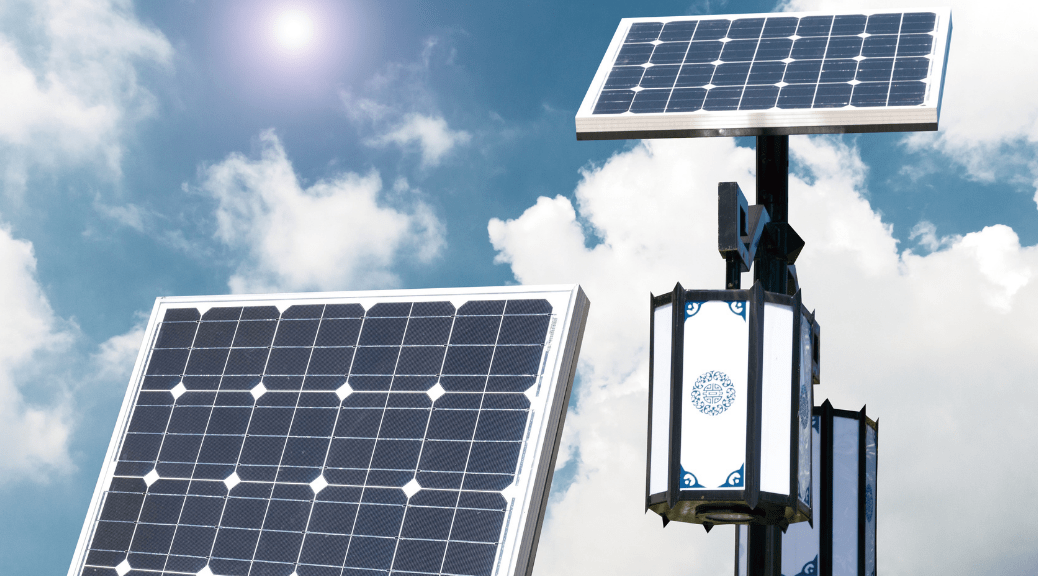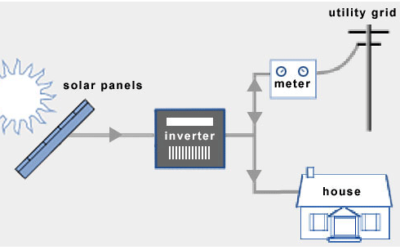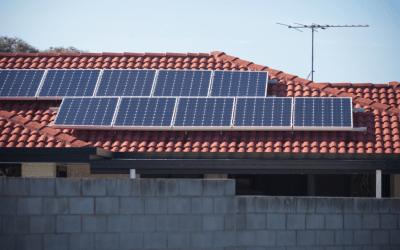FAQs on Solar Photovoltaic System

What are solar rooftop systems?
A solar rooftop photovoltaic (PY) system converts the sun’s light energy into electrical energy through solar panels mounted on the rooftop of a building. As light hits the solar panels, the solar radiation is converted into direct current (DC). The direct current flows from the panels and is converted by the solar inverter into alternating current (AC) used by local electric utilities. The plant can be connected to the grid or can be designed to be off-grid. Components that are required for rooftop solar installations are photovoltaic panels (to convert solar sunshine into direct electricity), batteries to store electricity when power is not required and the sun is shining, inverters to convert direct current (DC) into AC, cables and other miscellaneous items like junction boxes, earthing, lighting arrestors and conduits. Panels account for about 50 percent of the total cost
Solar panels are increasingly being installed by homeowners wishing to take advantage of a system that produces green energy and insulates them from rising energy prices. A rooftop solar power system can provide us with a clean and efficient source of energy for the home, saving us money and reducing dependence on the power grid. If you are worried about the amount of money spent in installation, just know that it will pay you back in just six to nine years in terms of savings in monthly bills. The useful life of a typical solar power plant is considered to be 25 years. The Indian government has committed to generate 100 GW of solar energy by 2022. By choosing solar, you make an investment you can be proud of and show your commitment to clean, renewable energy. In this report, we explain the common types of solar electric systems, the parameters on the basis of which one may choose the one that best suits their requirements, and other points that may concern the consumer.
Why Solar Rooftop?
Your vacant rooftop space will be fruitfully utilized. Your electricity bills will be reduced. This will be your contribution towards reducing dependence on the grid. This will also contribute in the reduction of CO2 emissions. Types of Solar Electric System The common types of solar electric systems are described here. Each has distinct applications and components. Grid-connected In this system the solar panels are connected to your local utility electrical grid. A grid-connected system consists of: Solar panels mounted on the roof An inverter to convert electricity from DC energy into AC. A junction box that connects the solar-panel wiring to the breaker panel on the home A power meter that displays how much power the home produces and uses Grid-connected with battery backup Very similar to the grid-connected system, this system adds a battery bank to collect the power generated from the solar panels. Power stored in the batteries can be used during outages. The battery bank collects power produced by the solar panels, sends it to the breaker box, and then into the house power system. Off-grid or standalone Off-grid systems are not tied to any utility power lines and are most common in remote areas where connecting to the utility grid is more expensive than purchasing an off-grid system. In off-grid systems, the solar electric system represents the home’s main source of power. Batteries store unused solar energy for use at night. Generators and other backup fuel sources are sometimes used as backup power when the solar power stored in the batteries is not enough to meet household needs.
What is a grid-connected rooftop solar PV system?
In grid-connected rooftop, the DC power generated from the solar photovoltaic (SPY) panel is converted into AC power using a power conditioning unit (PCU), and it is fed to the grid, either of 33 kY/11 kY three-phase lines or of 440 volt/220-volt three-phase lines/single-phase line, depending on the capacity of the system installed at the institution/ commercial establishment or residential complex and the regulatory framework specified for respective states. These SPY systems generate power during the daytime which is utilized fully by powering captive loads and feed excess power to the grid. Where solar power is not sufficient due to cloud cover, etc., the captive loads are served by drawing power from the grid.
Where can such solar plants be installed?
Such SPY systems can be installed at the rooftops of residential and commercial complexes, housing societies, community centers, government organizations, private institutions, etc.
How much roof area is required to set up the grid-connected rooftop solar PV system?
A 1 kW rooftop system generally requires 12 sq. meters (130 square feet) of flat, shadow-free area (preferably south-facing). Actual sizing depends also on local factors of solar radiation and weather conditions and the shape of the roof.
Do you need a contractor or is it a do-it- yourself (DIV) thing?
You need to install the system through a state nodal agency or an MNRE-empanelled agency (that is, contractor) for getting MNRE subsidy.
What are the other fiscal benefits available for installing grid-connected rooftop solar PV power plants?
Generation-based incentive (GBI) Exemption on open access as provided by DERC Exemption on conversion charges for residential consumers Exemption on wheeling charges, banking, cross- subsidy and other charges for installing SPY power systems installed under net-metering scheme. Excise duty exemption as provided by Ministry of Finance, Government of India, for installing a minimum 100 kWp grid-connected rooftop SPY power plant Accelerated depreciation benefit and tax holiday
Is any Central Financial Assistance (CFA) provided for residential consumers by MNRE for installing grid-connected rooftop solar PV power plants?
Central financial assistance (CFA) of 30 percent of the benchmark cost or as applicable from time to time is provided for installation of grid-connected rooftop solar power plants, of capacity 1 kW up to 500 kW. This is available to residential consumers (irrespective of the electricity connection).
What are the requirements for installing grid- connected rooftop solar PV power plants?
A vacant roof area of 10-12 sq. meters for installation of 1 kWp SPY system A three-phases/one-phase supply service connection Mandatory safety precautions/features installed as per the norms A single bi-directional meter for export and import Standard equipment as per the norms of MNRE Ownership permission and necessary documents
What is the annual energy generated from a 1 kW solar power plant?
The usual benchmark for energy generated from a 1 kW solar power plant is 1,500 units per annum. The amount of actual energy generated depends on both internal and external factors. External factors that are beyond the control of a solar power developer can include these: a) number of sunny days, b) solar irradiation, c) day temperatures, d) air mass and e) location.
What are the factors affecting generation?
Consumer VOICE experts present you the most comprehensive solar rooftop system buying guide that tells about the solar panel price, cost of installation of solar panels on rooftop, metering, maintenance, link to the suppliers and contractors and much more.
Related
Solar Rooftop System
Solar panels are increasingly being installed by homeowners wishing to take advantage of a system that produces green energy and insulates them from...
Solar Rooftop System Buying Guide
Solar Rooftop System Buying GuideConsumer VOICE experts present you the most comprehensive solar rooftop system buying guide that tells about the...


